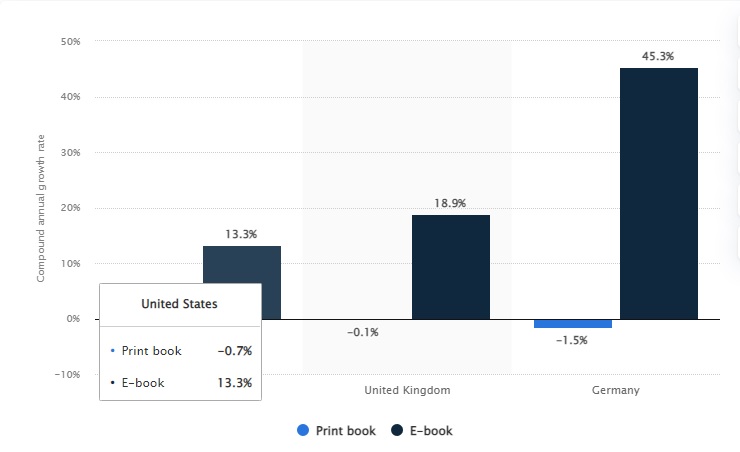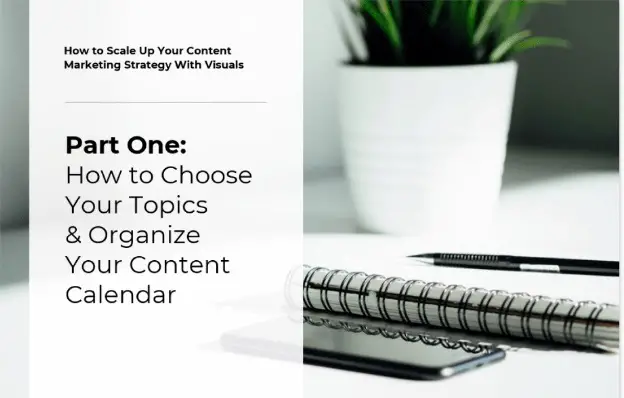How to make an ebook? The following tips and tricks could be very useful to succeed in your approach and make the most of this new text content format that has been gaining momentum in recent years.
An ebook (or digital book) actually covers two content realities.
Either it is a creation of personal literature, in which case it is usually paid for, like a paper book in a bookstore.
Or it is one of the digital communication supports of a company, in this case, it is generally free, but has the advantage to create interest and thus indirect benefits for the brand.
In both cases, it’s about using your knowledge and skills in a specific field to produce text content available on the Internet that will generate reading and income.
The trick is to know how to make a successful, impactful e-book that will have a positive impact on your business.
In this article, I have listed our 5 tips and tricks so that the e-book has no more secrets for you.
1. Understanding the challenges of the e-book

First of all, it is important to understand the issues of the e-book. It is a “digital book”, generally in Epub or PDF format, that can be downloaded in exchange for the reader’s contact information.
It adds to the list of already known content marketing media such as blog posts, academic articles, YouTube shows, and podcasts.
So what is the added value that justifies this additional format of the e-book? We will see that the e-book combines some of the advantages of digital media with some of the advantages of paper books.
Contrary to the other Internet supports, the e-book has the advantage of being consultable off-line and even printable.
It is indeed at the junction between traditional reading (with an identified and materializable book support) and digital news.
In addition to the usual computers, tablets, smartphones, the e-book can be read on any electronic reader (with the benefit of more pleasant reading, less aggressive for the eyes, therefore potentially longer).
Contrary to a blog article designed all at once, the e-book is designed for reading pleasure, with pagination, a certain dynamism, and sometimes a “flipping book” system that recreates the impression of turning pages.
The production of a paper book is expensive, requires several intermediaries, takes a lot of time… And in the end, only 8 to 12% of the selling price goes to the author.
On the contrary, the e-book costs almost nothing, requires few intermediaries, can be made available automatically to the reader as soon as it is loaded, and the benefits (direct in terms of sales, or indirect in terms of advertising) are for you.
In addition, the choice of the e-book can reinforce your brand image with an “ecological responsibility” asset, as opposed to the thick leaflets and large glossy paper catalogs that are used to consume energy.
2. Choose your topic and your audience well

To make a quality e-book, you need to choose your topic and your audience well.
In fact, the two are intimately linked: there is a balance to be found between the field you are most proficient in (in order to achieve expert and fluid writing) and the expectations of your potential readers.
Take stock of your knowledge and skills: which ones will you use in your ebook?
There is nothing to stop you from recycling text content that has already been written into blog posts, social media publications, podcasts to be transcribed into writing…
This will allow you to multiply the media, and thus optimize your chances of reaching your audience.
Next, you need to know your target audience as precisely as possible, in line with your marketing strategy.
Detailed knowledge of the social and linguistic characteristics of your target audience will help you save time and be more efficient when writing and choosing the distribution channel.
Beyond the classic and often costly survey, it can be interesting to observe the long-tail queries to identify a market niche and to consult the Google Trends tool to analyze the reading and interest trends of Internet users on your existing pages.
3. Take care of the visual identity of the e-book
You can’t judge a book by its cover, says the popular proverb. On the Internet, in fact, you can.

The attention span of the Internet user (and a fortiori of the mobile user) does not exceed ten seconds: it is, therefore, necessary to capture his attention from the first glance.
That’s why it is essential to take care of the global design of your e-book.
Be aware that there is no such thing as an ideal design. The best design is always tailor-made: it reflects the values of your company and is harmoniously declined on all your communication supports.
The graphic charter of your e-book must therefore be in line with that of your website and any paper media: this is crucial to create harmony so that the reader identifies you immediately and projects himself into a recognizable universe.
Then, the typography must be consistent with the content of your message.
We should avoid impersonal Times New Roman or Comic sans MS fonts, as well as gothic or handwritten fonts because they are difficult to decipher and would discourage reading.
Paragraphs should be spaced out, especially if your e-book is several dozen pages long. This makes for a more pleasant read, and therefore longer.
Finally, think about inserting elements that break the monotony of the text block.
First of all, we think of the images: they must be of high quality and inadequacy with the image of seriousness that you want to send back.
Think also of vector images, ideal in the case of multilingual e-books.
Finally, a good way to underline key passages is to copy them in the form of quotes in large characters that punctuate the rhythm of the page and the reading.
4. Writing tips to get started
Let’s move on to the writing tips for a successful e-book.

This writing is part of a content strategy: you provide the reader with information that will quench his thirst for knowledge, and in return, he will identify you as an expert in your field and will easily turn to you for an immediate or future purchase.
It is therefore essential to take care of your image of expertise.
Let’s start with what the reader will see at first glance: the overall structure of the e-book. This overall structure must make the reader aware of the rational, even academic, approach that you adopt for your demonstration or background study.
It is therefore essential to include a detailed summary, detailing not only the chapters but also the sub-sections down to the smallest one.
The reader will then be able to read your e-book in its entirety or go directly to a specific page depending on the information he is looking for.
In the same vein, a summary (with its counterpart translated into English: the “abstract”) of the e-book of about ten lines is a code borrowed from academic writing which will constitute a pledge of seriousness for your work.
Finally, it is a good idea to start your e-book with an introduction explaining its genesis, its approach, its field of application, and its methodological bias.
These tips we have just mentioned are explicitly aimed at sending an expert image to your readers.
But your e-book can also be beneficial for you in terms of SEO: now it is also Google that you have to please.
To do this, make sure you insert keywords as naturally as possible in the titles and at the beginning of paragraphs to facilitate the indexing work of Google’s spybots and thus use your e-book to boost your positioning in search results.
It’s true, the Internet allows you to produce an e-book quickly and cheaply. However, keep in mind that in “e-book”… there is “book”.
Any book implies by its very nature of literary object a solemnity of expression, a certain prestige.
This is why spelling and grammar must be impeccable, contrasting with the relatively informal, even colloquial, nature of Internet content.
5. Sell, promote and recycle your e-book
Once your e-book has been produced, the question of its distribution arises. First, you have to decide on its format, usually Epub or PDF. Both have different advantages.
Epub is intended for short e-books, is reformable according to the size of the screen, and offers a pleasant browsing system adapted to short “pleasure” type of reading.
PDF is a guarantee of seriousness and is intended for long and technical ebooks (particularly in B to B) and offers a search for the page in the top navigation bar.
To promote your ebook, you can choose between highlighting it on a landing page, distributing it on social networks, soliciting partners, or even paying sponsorship.
Your e-book is written, formatted, distributed: phew, that’s it!
Advice: Not quite, in fact: to get the most out of it, we recommend that you monitor its success with Internet users after its distribution and that you keep an eye on which parts of your ebook are the most popular.
Your e-book seems outdated? Recycle it! In a content marketing strategy, nothing is lost, everything is transformed.
Thus, the content of your e-book will be used again as raw material for other communication formats.

